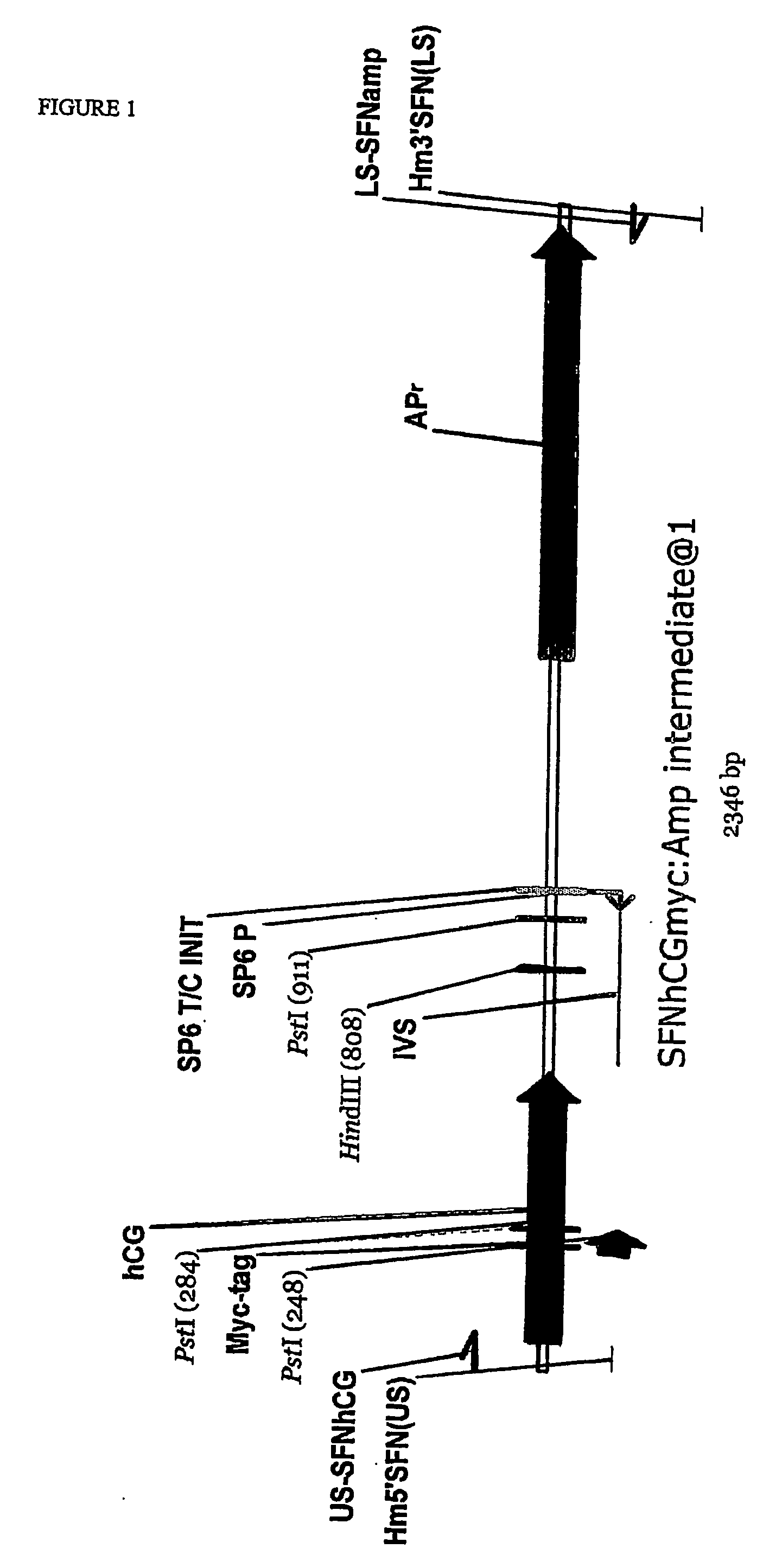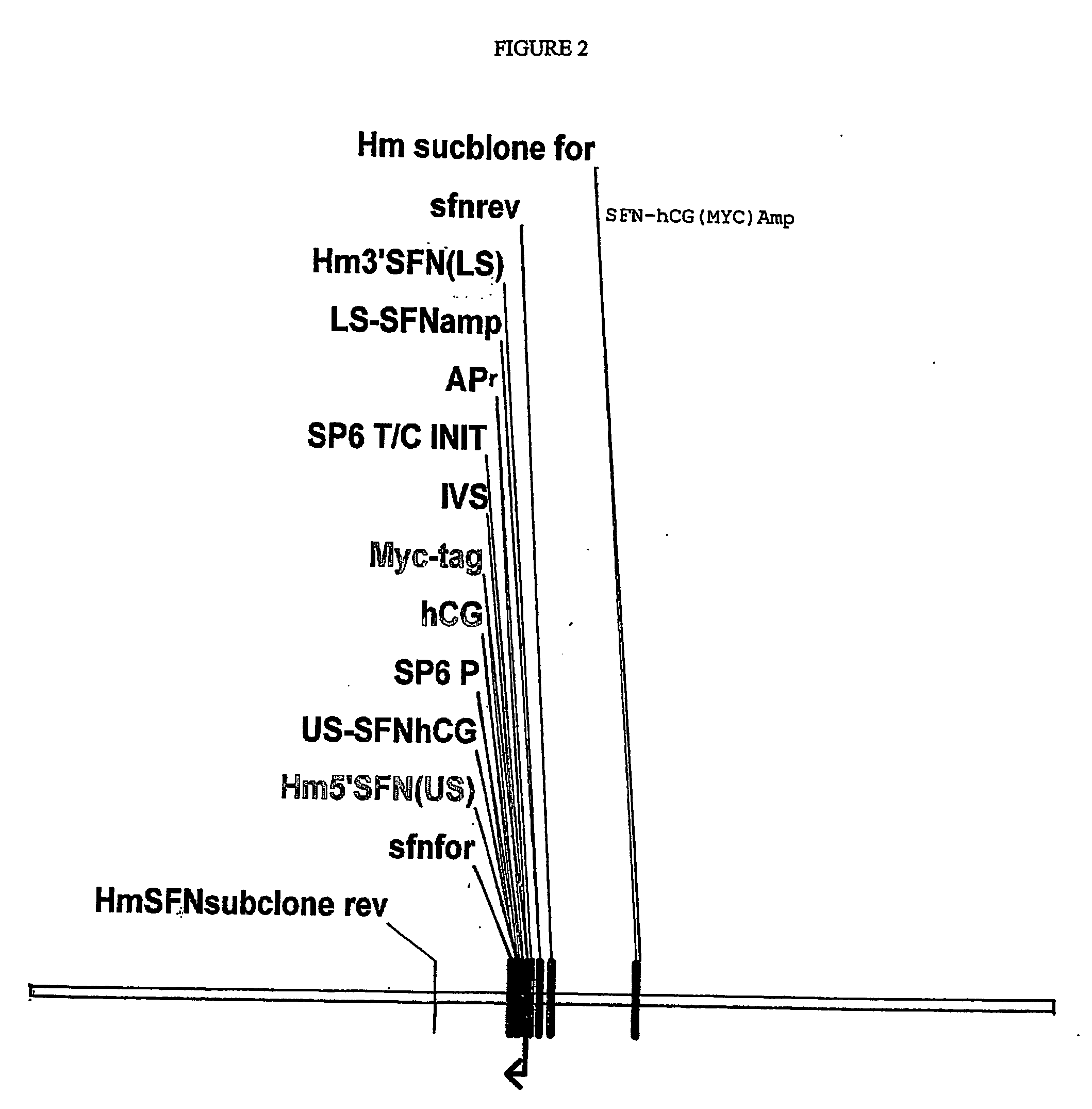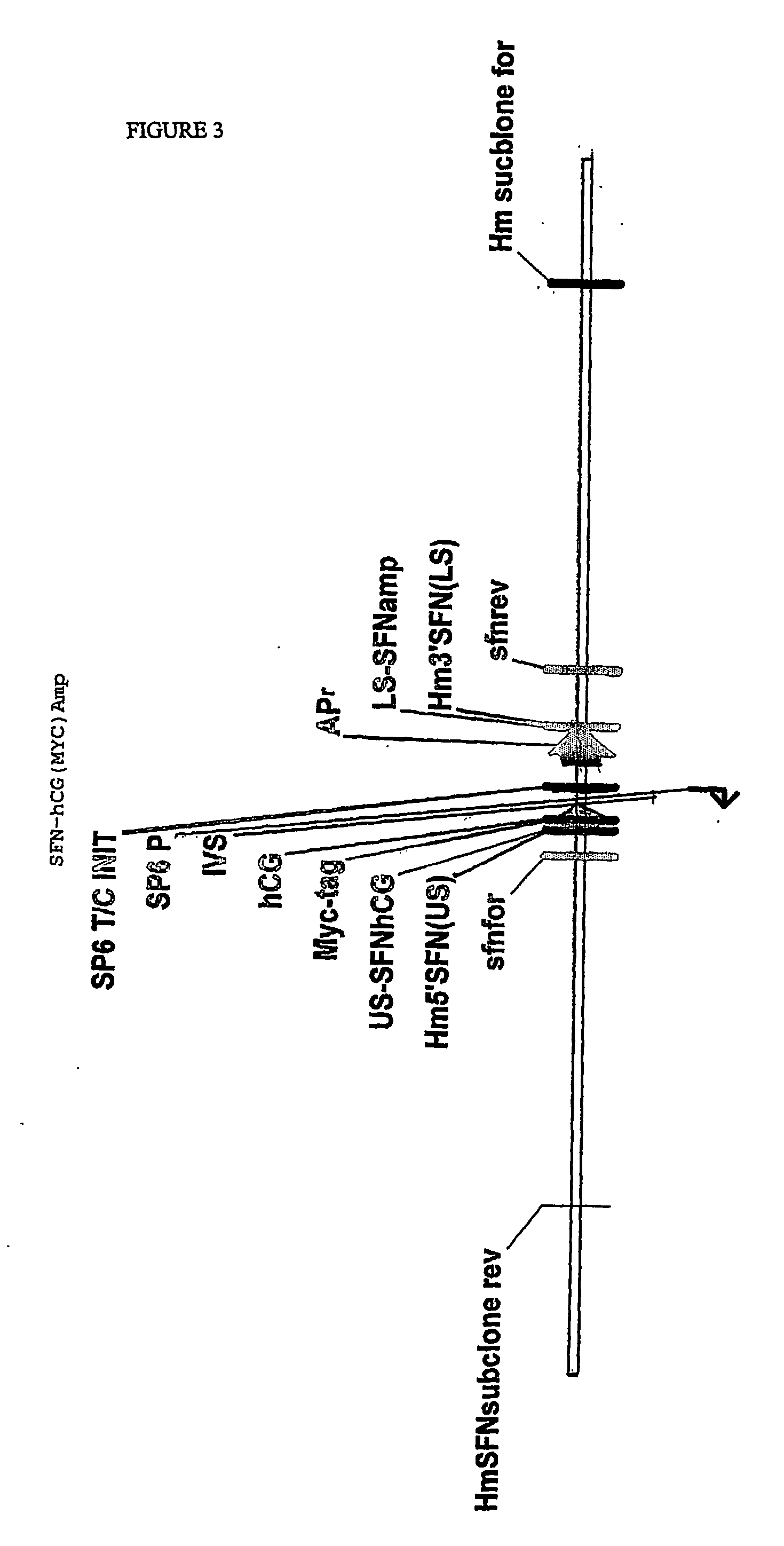Method of determining xenograft responses
- Summary
- Abstract
- Description
- Claims
- Application Information
AI Technical Summary
Benefits of technology
Problems solved by technology
Method used
Image
Examples
example 2
Xenograft In Vivo
[0109] PC3 cells stably transfected with the SFN-hCG(myc)-Amp reporter construct were allowed to grow as solid subcutaneous tumours in congenitally athymic nude mice. The mice were then treated with anticancer drugs that act by inducing G2 / M arrest. The drugs chosen for this exemplification were etoposide and camptothecin [12].
[0110] For this experiment, wild-type PC3 cells (which do not express or secrete hCG) and the stable cell line containing the SFN-hCG(myc)-Amp reporter construct were used.
[0111] Wild-type and engineered PC3 tumour cell lines were cultured in RPMI medium supplemented with 10%-15% heat inactivated foetal calf serum, 2 mM L-glutamine, penicillin (50 IU / ml), streptomycin (50 μg / ml). Culture medium for PC3 / SFN cells also contained G418 (200 μg / ml). Cultures were incubated in a humidified incubator at 37° C., 5% CO2. Cells were harvested, pooled, centrifuged, and re-suspended in cold medium. This was mixed with an equal volume of cold Matrigel,...
PUM
| Property | Measurement | Unit |
|---|---|---|
| Gene expression profile | aaaaa | aaaaa |
| Time | aaaaa | aaaaa |
Abstract
Description
Claims
Application Information
 Login to view more
Login to view more - R&D Engineer
- R&D Manager
- IP Professional
- Industry Leading Data Capabilities
- Powerful AI technology
- Patent DNA Extraction
Browse by: Latest US Patents, China's latest patents, Technical Efficacy Thesaurus, Application Domain, Technology Topic.
© 2024 PatSnap. All rights reserved.Legal|Privacy policy|Modern Slavery Act Transparency Statement|Sitemap



